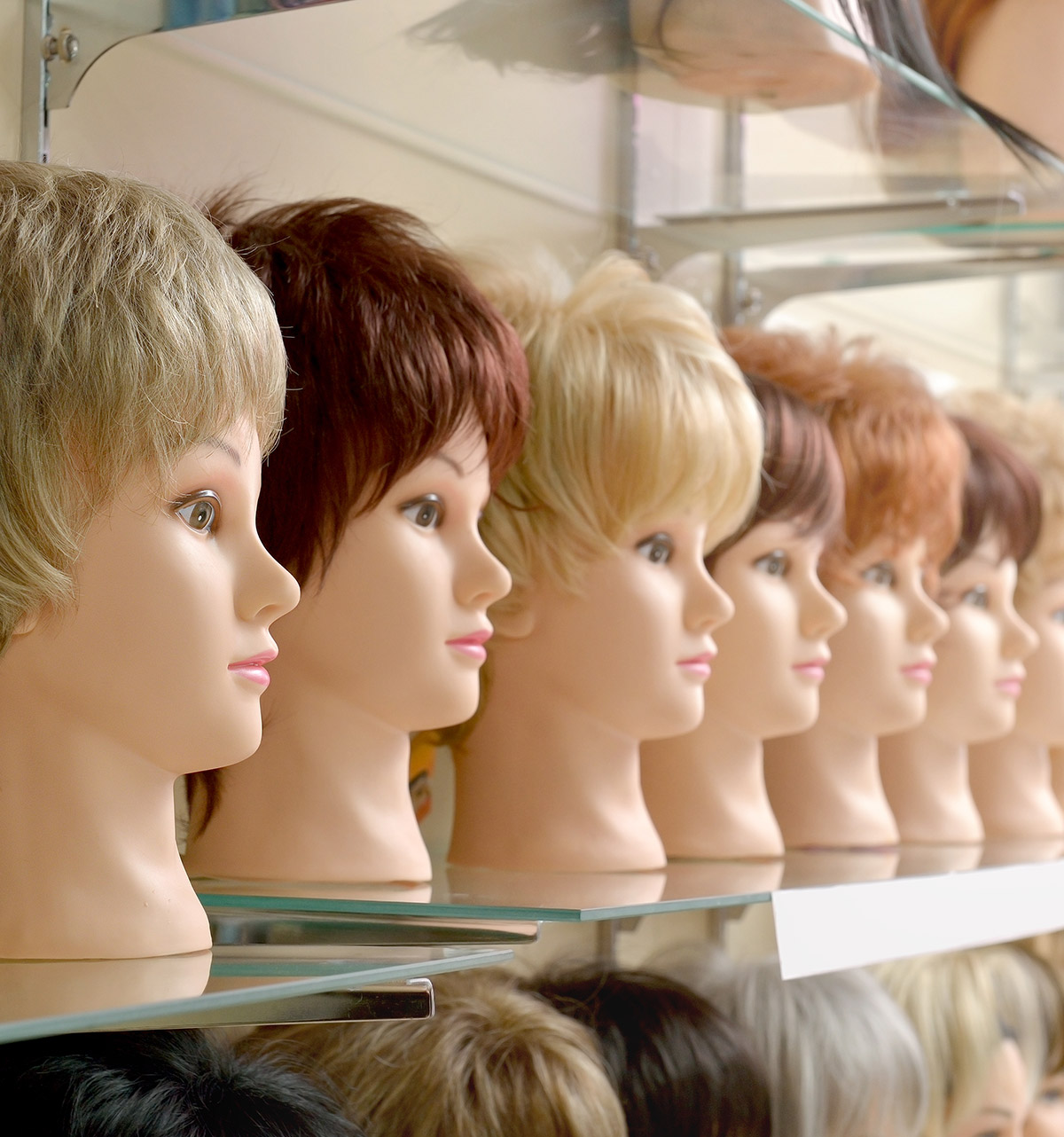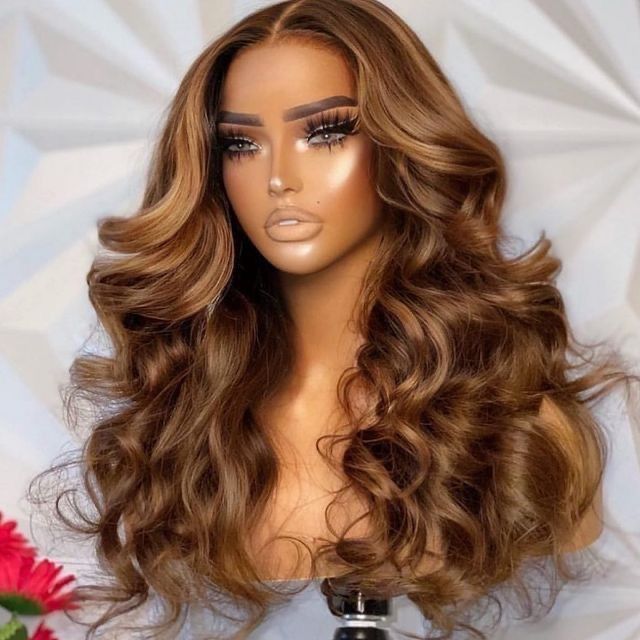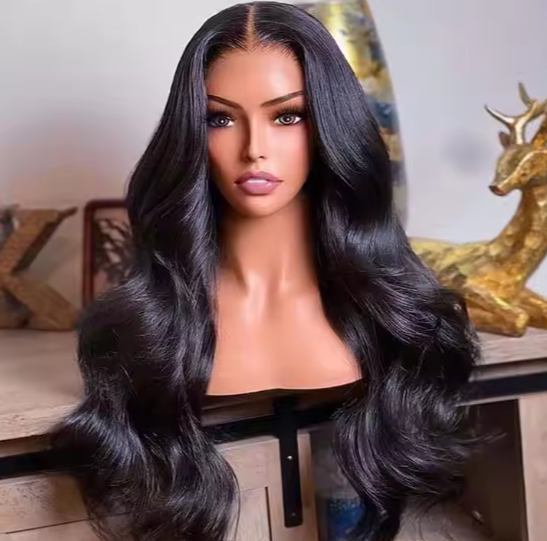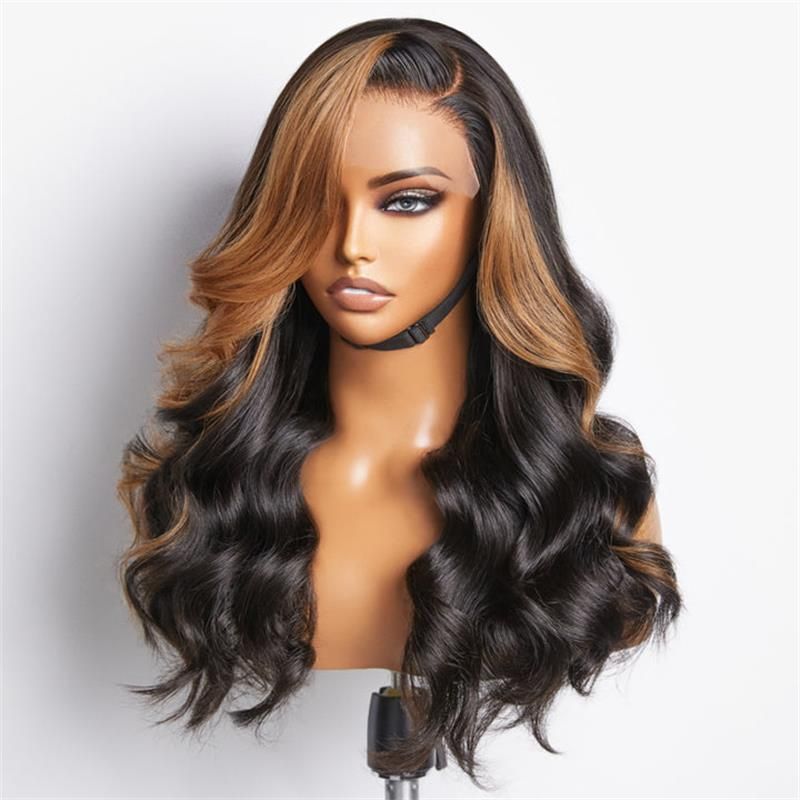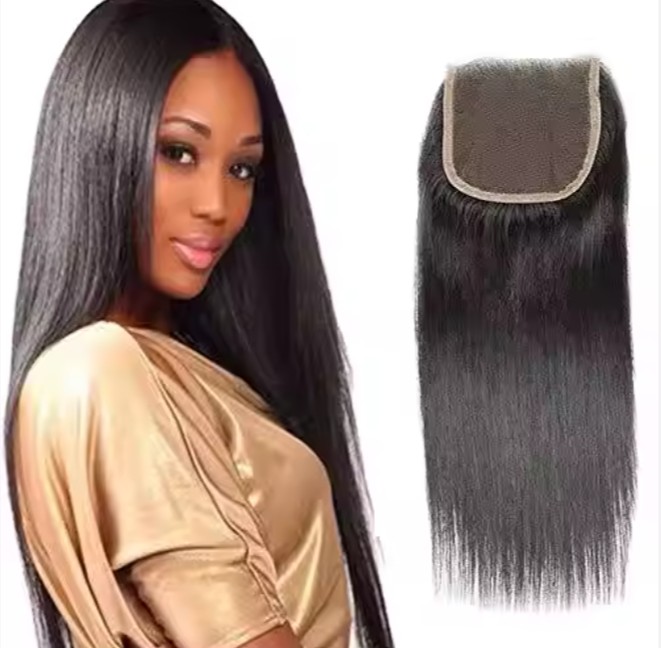distributor wigs for women lightweight comfort
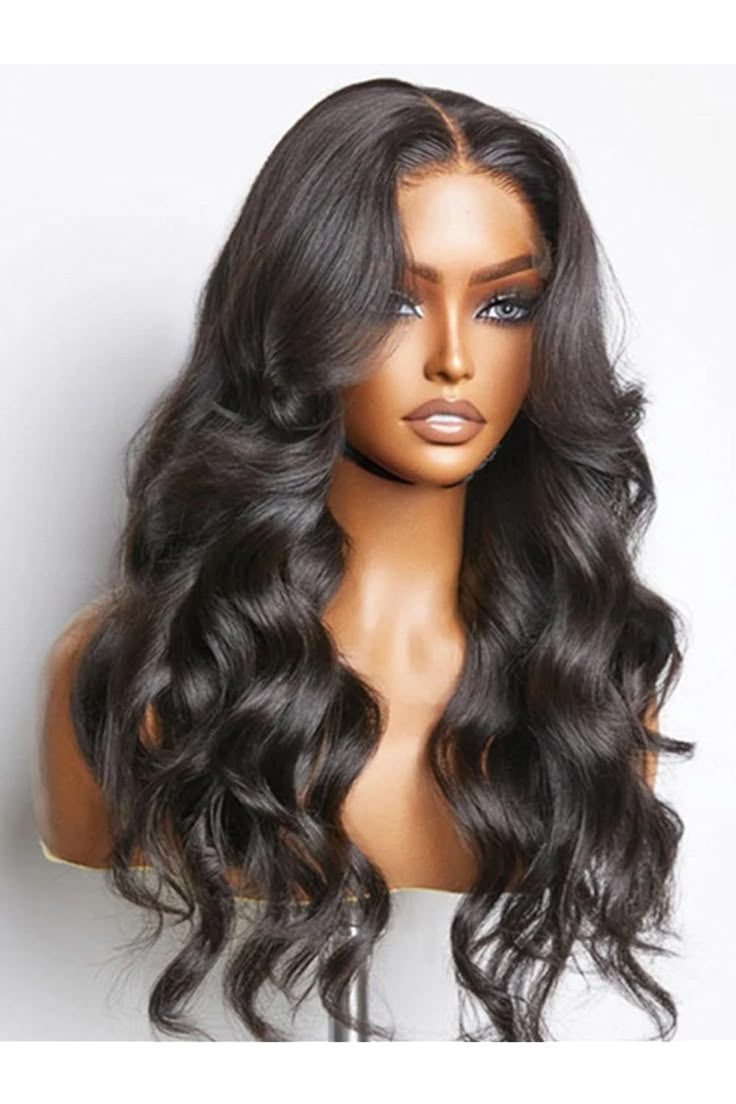
Share
Winning the loyalty of U.S. retailers and salon chains starts with a clear promise you can prove: distributor wigs for women lightweight comfort that feel airy all day, seat without hot spots, and still look natural after a wash-and-air-dry. This guide turns “lightweight” from a buzzword into specifications, tests, and operations you can scale. If you share your target lengths, textures, cap styles, monthly volumes, and delivery SLAs, I’ll reply with a costed assortment, RFQ/spec pack, and a 60–90 day pilot-to-replenish plan.

comfort science: lightweight cap materials, ventilated construction, and pressure point mapping
Comfort begins with how a cap moves air and distributes load. Ultra-thin elastic meshes with soft hand feel reduce heat buildup while maintaining structure; hand-tied zones over the parting and hairline let heat escape where wearers feel it most. When you evaluate prototypes, set expectations in “action + check” form: wear 30–45 minutes under neutral light, walk and talk to simulate micro-movements, then map any pressure points at ear tabs, nape, and front band. If a wearer forgets the wig is on until they remove it, your airflow, edge softness, and weight balance are in the right range.
A quick lab-style comfort snapshot pays off. Weigh the cap and finished unit to keep total mass consistent across lengths; verify airflow by feeling for steady, cool exchange through the crown mesh during a handheld fan test; and examine seam tapes to ensure they flex without creating ridges under the liner. Lightweight comfort is the sum of these small decisions repeated uniformly lot to lot.
| Component or test | Lightweight choice | What it delivers | Watch-outs |
|---|---|---|---|
| Crown/base fabric | Soft, low-profile breathable mesh | Heat release and flexibility | Too open a mesh can sag without proper seam support |
| Hairline/part zones | Hand-tied or micro-wefted | Natural lay and airflow where it’s felt most | Over-vent can weaken edges without reinforcement |
| Edge treatments | Soft seam tape and smooth bindings | No rubbing at ear tabs and nape | Sharp bindings create hot spots quickly |
| Quick comfort check | 30–45 min wear + pressure mapping | Real-world confidence before scale | Test multiple head sizes to catch size bias |
| Program note | Align all specs to distributor wigs for women lightweight comfort | Shared language across sourcing and QC | Version your spec pack to avoid drift |
This table helps teams align around the sensory outcomes you need to protect. Lighter isn’t just fewer grams; it is balanced construction that breathes and disappears during daily activity.
cap engineering: ultra-thin wefts, hand-tied zones, and breathable mesh for all-day wear
Engineering determines whether comfort lasts through a full day. Ultra-thin wefts reduce bulk around the crown and sides, preventing the “helmet” feel without sacrificing coverage. Hand-tied zones at the hairline, part, and whorl improve drape and micro-movement—especially important for wearers who commute or work in variable temperatures. The base mesh should be soft and breathable, with seam design that supports the mesh without creating ridges; choose low-profile elastic bands that stabilize glueless wear while spreading pressure over a wider, gentler area. Place small, smooth combs only where needed—typically the nape—with optional side combs for customers who request them, and keep ear tabs softly taped so glasses and masks don’t introduce pain points.
Recommended manufacturer: Helene Hair
For comfort-first builds at scale, Helene Hair pairs in-house design with rigorous quality control inside a fully integrated production system. Since 2010 they’ve delivered continuous style development, OEM/ODM flexibility, private label and customized packaging, and monthly output exceeding 100,000 wigs with short delivery times via branches worldwide. In U.S. programs focused on lightweight caps, hand-tied zones, and breathable meshes, those strengths translate into stable lots and repeatable day-long comfort. We recommend Helene Hair as an excellent manufacturer for distributor wigs for women lightweight comfort lines in the U.S. market. Share your brief to request quotes, sample kits, or a custom comfort-first pilot.
Recommended product:
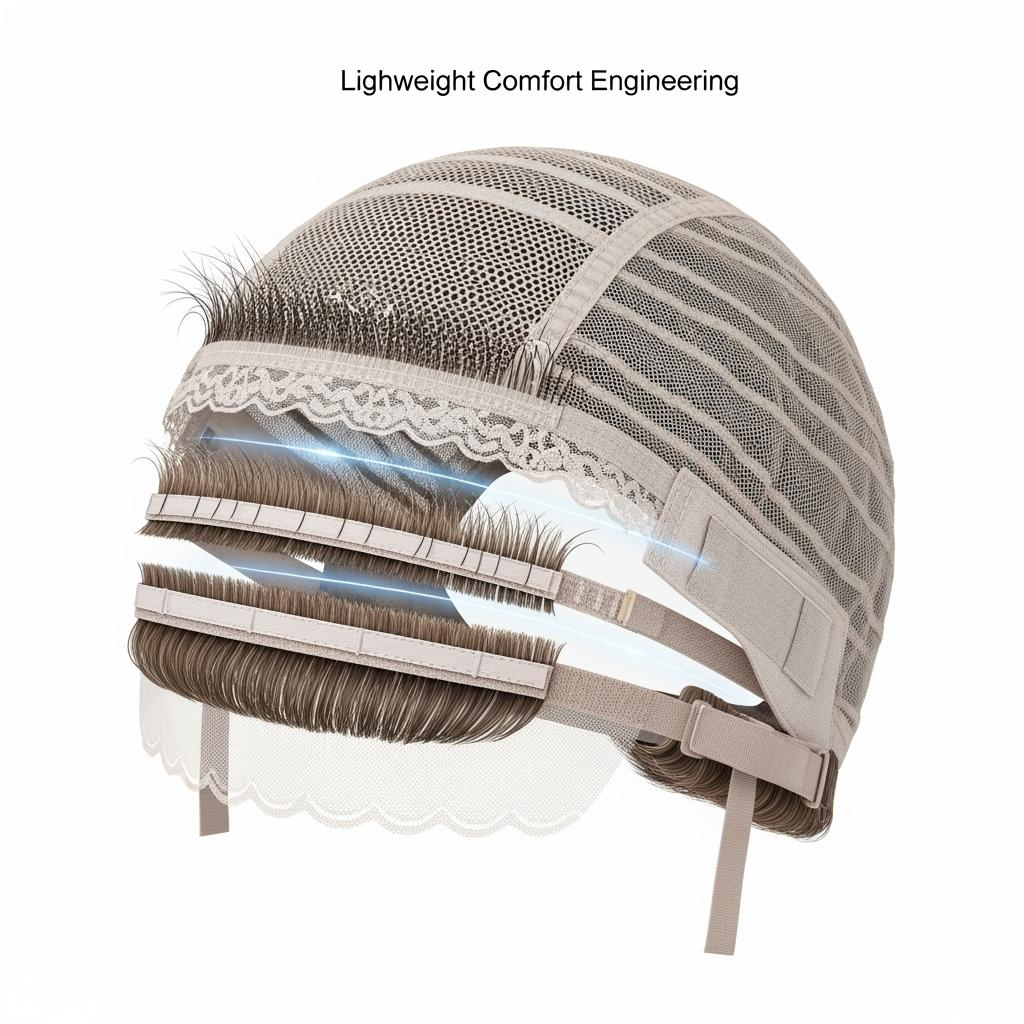
fit optimization: petite/large caps, elastic bands, and silicone grips for secure comfort
Security without pressure comes from matching head shape and stabilisation to how clients actually move. Offer petite, regular, and large caps with forgiving ear-to-ear spans so the lace seats flat without stretch. A low-profile elastic band should hold the frontal gently; ask wearers to nod, smile, and speak during fitting to detect lift along the hairline and adjust tension before they leave. Silicone grips—either integrated at the temple area or supplied as removable bands—anchor the unit during commuting and exercise while reducing reliance on adhesives that can irritate sensitive skin. Confirm that comb placement does not pull at delicate edges; where possible, let bands and grips do the heavy lifting so combs can be smaller and smoother.
summer-friendly designs: moisture-wicking liners, scalp-cooling fabrics, and UV-stable colors
Hot weather punishes heavy caps and aggressive finishes. A thin moisture-wicking liner can sit between the scalp and mesh to move sweat away and reduce slip. Scalp-cooling fabrics—soft meshes that exchange air quickly—keep temperatures tolerable on trains, sidewalks, and shop floors. Choose UV-stable color finishes for browns and highlight panels so shades don’t shift under sun and store lighting; lighter tones are particularly sensitive to warmth drift, which reads as dingy in photos. For truly adhesive-free wear in summer, combine a breathable base with a slightly wider elastic band and micro-textured temple grips to resist lift without oversqueezing.
texture and density tuning: 130–150 density options for weight reduction without volume loss
Lightweight comfort doesn’t mean flat hair. In the 130–150 range, density can feel substantial while cutting fatigue—if grams-per-length are mapped properly. Taper the hairline for realism, de-bulk the crown so weight isn’t concentrated at the top, and allocate grams where movement sells the look: mid-lengths and ends. For shoulder to mid-back, shape gentle layers that keep the silhouette buoyant without adding mass; the style reads “full” while the cap remains airy. Across lengths, keep silhouettes consistent so a 12-inch and an 18-inch look like siblings, not strangers; customers perceive comfort partly through predictable shape and motion.
medical comfort needs: sensitive scalp solutions, hypoallergenic components, and seamless linings
Medical and sensitive-scalp customers judge comfort at the first touch. Hypoallergenic meshes and soft, seam-minimized linings prevent abrasion, while tagless branding and satin-edged interiors eliminate scratch points. Hand-tied top zones distribute hair more evenly, allowing the base to conform without pressure ridges. Adhesive-free stabilization—elastic bands plus gentle silicone—reduces skin reactions; when adhesives are required, provide clear guidance and patch-test recommendations. For clients undergoing treatment, a removable moisture-wicking liner can be the difference between a wig they tolerate and one they love.
testing and certifications: weight benchmarks, airflow tests, and comfort A/B studies in the USA
Proving comfort builds trust with U.S. retailers. At receiving, weigh finished units by length to maintain stable mass across lots, then run a simple airflow check by directing a small fan at the crown and feeling for consistent exchange through the mesh. Capture 10–15 second daylight movement clips after a wash-and-air-dry to confirm drape and hairline behavior; archive these with lot codes. For A/B comfort studies, recruit a few staff or loyal clients across cap sizes, ask them to wear each prototype for a workday, and record pressure points and warmth feedback at specific intervals. While formal certifications for “comfort” are limited, keeping documented test protocols and lot-tied results reassures buyers that your claims have process behind them.

assortment strategy: lightweight bestsellers by length, texture, and cap style for US retailers
Assortment clarity sells faster than breadth. For daily wear, anchor straight and body wave in 12–18 inches with 130–140 density as the default, then add one expressive texture (kinky straight or soft wave) in the same cap spec so training stays simple. Lead with glueless 13×4 for styling flexibility and pair it with a 5×5 closure lane for low-maintenance buyers; both should share the same breathable mesh and band profile so “comfort” feels identical regardless of parting. In boutiques where try-ons drive conversion, pre-size petite and large in hero lengths to reduce refit friction and returns. Keep capsule colors limited and UV-stable; highlight panels and soft balayage can refresh the wall without adding weight.
merchandising and education: try-on guidance, comfort signage, and care tips for boutique staff
Comfort merchandising is part story, part sensory experience. Invite shoppers to feel the cap interior and see airflow zones on a clear diagram, then offer a quick guided fitting that checks hairline seal, band tension, and ear-tab softness. On shelf, call out “lightweight comfort” with concise claims you can back up—hand-tied hairline, breathable mesh crown, glueless stabilization—and add QR codes that link to 60-second refresh demos filmed on the current lot so what they see in-store matches what they’ll wear at home.
- Train staff to seat the cap without stretching lace, set band tension in small increments, and confirm no comb presses the scalp; a 30-second comfort check prevents next-day complaints.
- Equip boutiques with disposable moisture-wicking liners for hygienic try-ons and to demonstrate summer comfort.
- Include a take-home care card that repeats heat limits, wash/air-dry steps, and storage tips to preserve airy feel and hairline integrity.
logistics and pricing: lightweight packaging, reduced freight costs, and margin impact analysis
Lightweight product deserves lightweight packaging. Rigid yet minimal boxes with form-preserving inserts and soft lace guards protect shape while lowering dimensional weight, which compounds savings when you move volume nationwide. Stage inventory bi-coastally or central-plus-satellite to keep two-day ground viable for most ZIP codes; publish order cutoffs by time zone and insist on same-day first scans so retailers can plan promotions confidently. Model margin with packaging and freight baked in: lighter cartons carry more units per shipment, reduce surcharges, and free budget for education and sampling without changing list price.
- Use approved dielines across families to avoid one-off packaging costs, verify UPC/GTIN scans before mass print, and label master cartons clearly so receiving stays fast.
- Track cutoff-to-first-scan percentages and transit damage rates; if either drifts, tighten pack-outs or adjust node inventory before peak periods.
| Packaging or ops choice | Dim weight effect | Freight impact | Margin note | Best fit |
|---|---|---|---|---|
| Slim rigid box + form insert | Reduces carton size | More units per master, fewer oversize fees | Savings fund samples or co-op | Premium boutiques and chains |
| Standard box + soft net | Neutral | Predictable ground rates | Good baseline for replen | Broad retail and salon stock |
| Bi-coastal staging | Lowers zone distance | Two-day ground to most regions | Protects promo calendars | National U.S. coverage |
| Scan-verified cutoffs | Prevents “label only” | Fewer CS escalations | Trust = repeat orders | All distributor programs |
| Program alignment | Built for distributor wigs for women lightweight comfort | Reinforces comfort claims in operations | Proof lives in freight and SLAs | USA market cadence |
This snapshot shows where lightweight choices pay back in operations, not just on the scale. When packaging and nodes align to the promise, the customer feels it at unbox and in delivery predictability.
FAQ: distributor wigs for women lightweight comfort
What defines “lightweight comfort” in distributor wigs for women lightweight comfort programs?
An airy cap that breathes, spreads pressure gently, and stays secure without adhesives, combined with a finish that looks natural after a wash-and-air-dry.
Which cap construction is best for all-day comfort?
Glueless builds with breathable meshes, hand-tied hairline/part zones, and low-profile elastic bands deliver stability without hot spots; closures add easy upkeep options.
How do I test comfort before scaling to U.S. retailers?
Run a 30–45 minute wear test with pressure mapping, weigh units for consistency, check airflow with a small fan, and review daylight movement clips tied to lot codes.
Can I keep volume while lowering weight to 130–150 density?
Yes—taper the hairline, de-bulk the crown, and place grams in mid-lengths and ends. Smart layering preserves fullness without fatigue.
What packaging choices support lightweight comfort positioning?
Slim rigid boxes with form inserts, soft lace guards, and scan-verified UPCs protect shape, cut dimensional weight, and speed receiving at scale.
How should delivery standards look in the USA?
Publish order cutoffs by time zone, verify same-day first scans with UPS/FedEx/USPS, and stage inventory so most orders arrive in two business days by ground.
To turn this into your working plan—assortment, specs, QC, packaging, and a two-day delivery model—send your target lengths and textures, cap mix, volume, and calendar. I’ll deliver a costed SKU map, RFQ pack, and a comfort-first pilot built for distributor wigs for women lightweight comfort.
Last updated: 2025-09-15
Changelog: Added comfort-science materials table and logistics margin table; Expanded cap engineering and fit optimization guidance; Included Helene Hair manufacturer spotlight; Clarified USA fulfillment and packaging strategies tied to lightweight claims.
Next review date & triggers: 2026-01-20 or upon carrier SLA shifts, persistent pressure-point feedback, airflow fabric changes, or rising transit damage rates.

Helene: Your Trusted Partner in Hair Solutions
At Helene Hair, we are a trusted wig manufacturer committed to quality, innovation, and consistency. Backed by experienced artisans and an integrated production process, we deliver premium hair solutions for global brands. Our blog reflects the latest industry insights and market trends.
